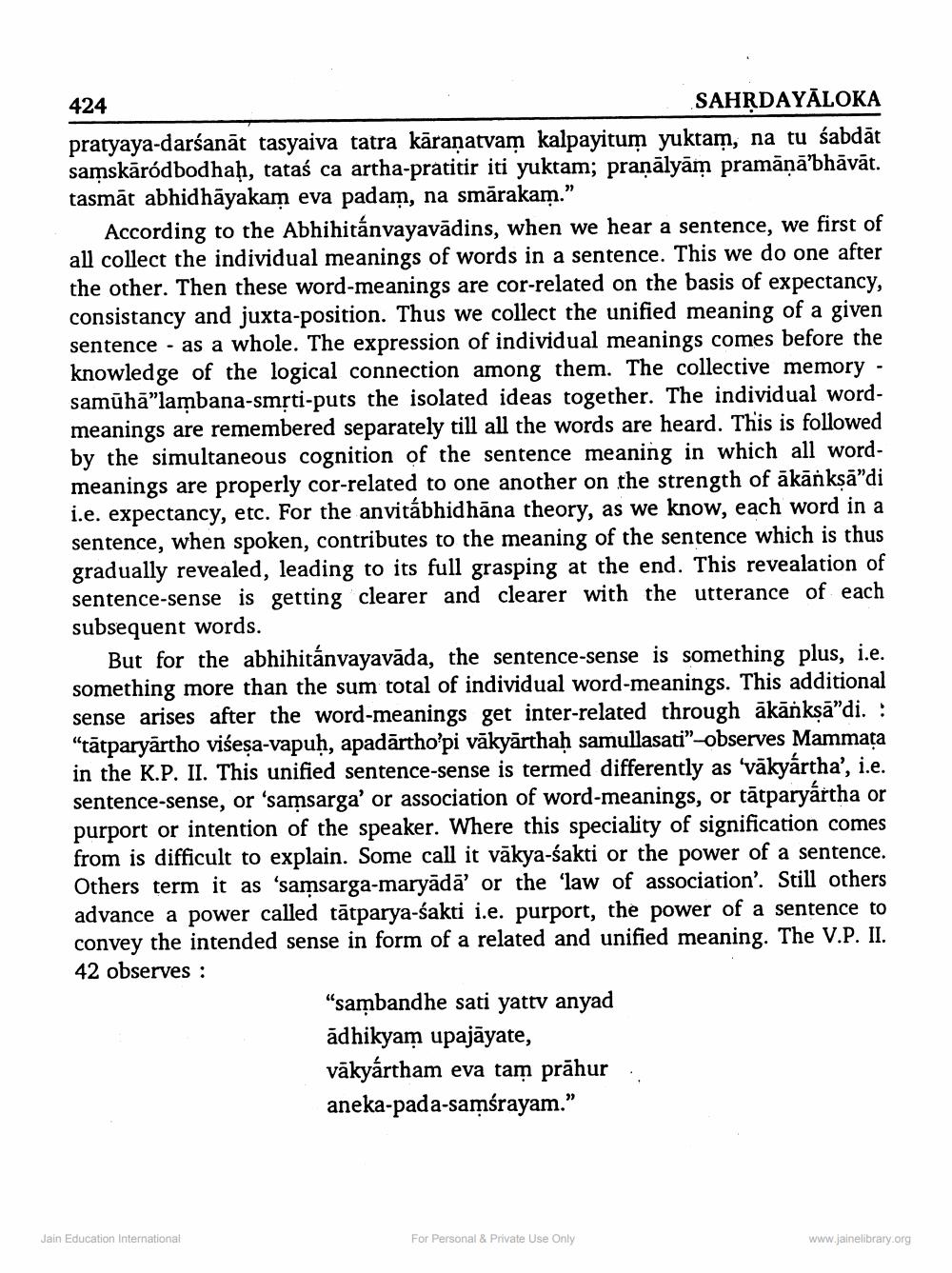________________
424
SAHĶDAYĀLOKA pratyaya-darśanāt tasyaiva tatra kāranatvam kalpayitum yuktam, na tu śabdāt samskāródbodhaḥ, tataś ca artha-pratitir iti yuktam; praņālyām pramāņābhāvāt. tasmāt abhidhāyakam eva padam, na smārakam."
According to the Abhihitánvayavādins, when we hear a sentence, we first of all collect the individual meanings of words in a sentence. This we do one after the other. Then these word-meanings are cor-related on the basis of expectancy, consistancy and juxta-position. Thus we collect the unified meaning of a given sentence - as a whole. The expression of individual meanings comes before the knowledge of the logical connection among them. The collective memory - samūhā”lambana-smrti-puts the isolated ideas together. The individual wordmeanings are remembered separately till all the words are heard. This is followed by the simultaneous cognition of the sentence meaning in which all wordmeanings are properly cor-related to one another on the strength of ākāńksā"di i.e. expectancy, etc. For the anvitábhidhāna theory, as we know, each word in a sentence, when spoken, contributes to the meaning of the sentence which is thus gradually revealed, leading to its full grasping at the end. This revealation of sentence-sense is getting clearer and clearer with the utterance of each subsequent words.
But for the abhihitánvayavāda, the sentence-sense is something plus, i.e. something more than the sum total of individual word-meanings. This additional sense arises after the word-meanings get inter-related through ākānksā"di. : "tātparyartho višesa-vapuh, apadārtho'pi vākyārthah samullasati"-observes Mammata in the K.P. II. This unified sentence-sense is termed differently as 'vākyártha', i.e. sentence-sense, or 'samsarga' or association of word-meanings, or tātparyártha or purport or intention of the speaker. Where this speciality of signification comes from is difficult to explain. Some call it vākya-sakti or the power of a sentence. Others term it as 'samsarga-maryādā' or the 'law of association'. Still others advance a power called tātparya-śakti i.e. purport, the power of a sentence to convey the intended sense in form of a related and unified meaning. The V.P. II. 42 observes :
"sambandhe sati yattv anyad ādhikyam upajāyate, vākyártham eva tam prāhur: aneka-pada-samśrayam."
Jain Education International
For Personal & Private Use Only
www.jainelibrary.org




